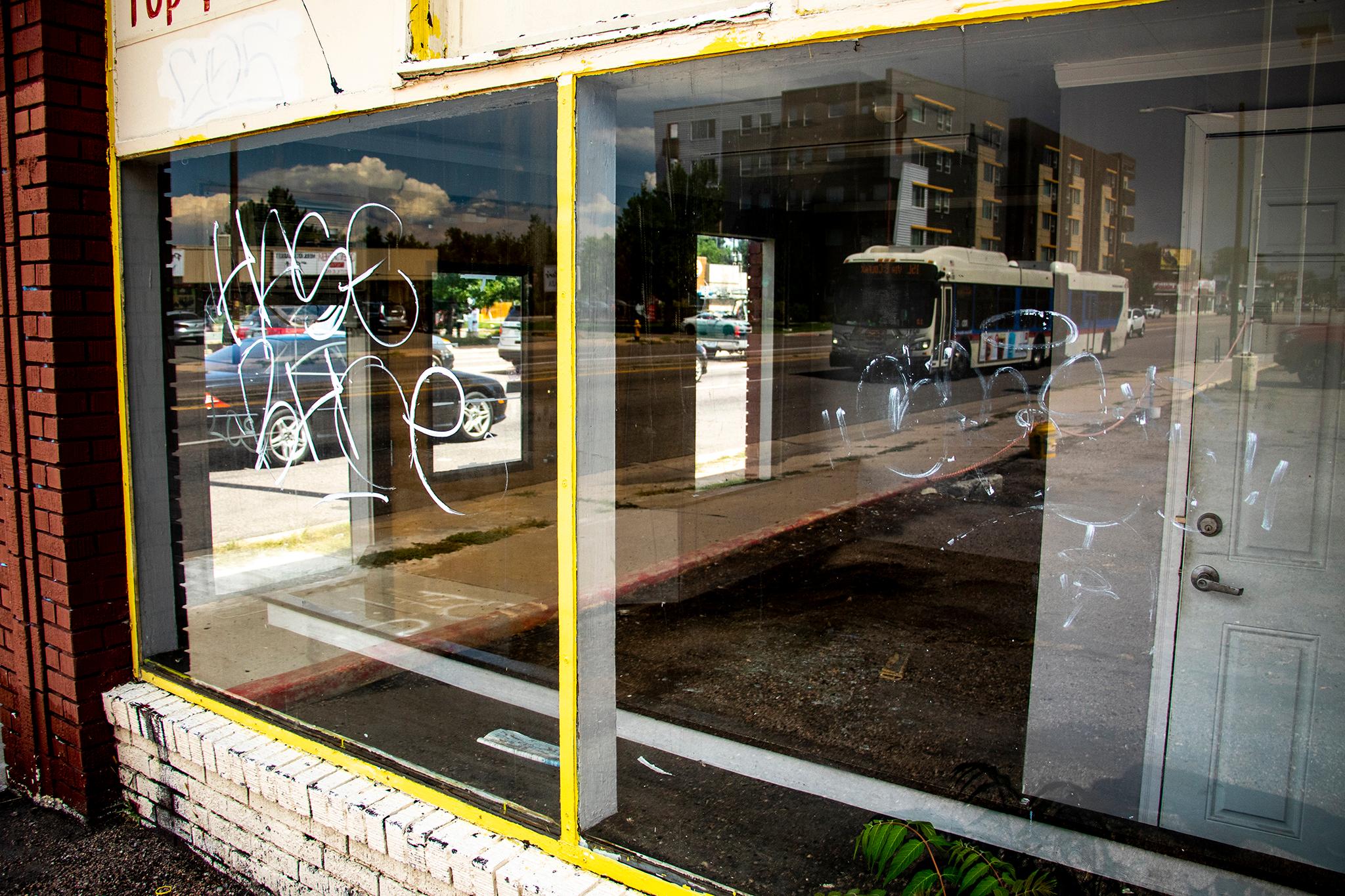The Denver City Council will consider establishing an urban redevelopment area on far East Colfax Avenue when it meets next week, but the plan faces opposition from locals and at least one council member who questions if such a plan is the right fit for the neighborhood.
To back up a bit: Establishing an urban redevelopment area creates a boundary in which "blight" -- buildings or property deemed rundown and unsafe by the government -- can be redeveloped with the help of sales taxes and property taxes. Council members will not vote on the taxing system, known as tax increment financing, Monday. But they will consider the framework to make that system work.
This urban redevelopment area would encompass East Colfax Avenue between Monaco Parkway and Yosemite Street, on the border of Aurora.
The area has been deemed blighted after meeting the threshold under state law, according to Denver Urban Renewal Authority executive director Tracy M. Huggins. DURA is a quasi-governmental agency that helps finance development, including homes and public infrastructure, in neighborhoods that some consider rundown. Huggins said the idea behind establishing an urban redevelopment area is to incentivize more development. Typically, when they're requested, it's alongside a project (there is no such project attached to this request).
Luring development is precisely what gives Tim Roberts, president of the East Colfax Neighborhood Association, pause.
And it's not just him: On Tuesday, the group voted 8-4 against supporting the plan.
Roberts said he doesn't think enough people are aware of the complex plan or what it does. And that's important to him in an area where he said lots of families are struggling. East Colfax has been eyed for its redevelopment potential over the past few years.
"I think overall people are saying we don't really need to incentivize this particular way," Roberts said, adding that the neighborhood organization understands DURA's goals but feels like their objective has changed over the years.
There's a human element to this as well: Roberts points out that the area is being called blighted "when there are people here." He fears more development will strip the area of its cultural diversity.
District 9 City Councilwoman Candi CdeBaca made her opposition known when it was brought up during Monday's City Council. She raised concerns over tax increment financing, calling it a type of new urban renewal that she said "generally" favors large developers over people of color and low-income residents.
"I encourage you all to review the indicators of blight and recognize who's targeted and disadvantaged by these efforts that are top-down rather than community driven," CdeBaca said.
Roberts said they opened Tuesday's meetings by playing CdeBaca's remarks. The redevelopment area falls outside of her district.
District 5 Councilwoman Amanda Sawyer, whose district includes the new zone, said she will support the plan Monday. Sawyer said she's been a part of the development process, which has tried to "stave off" concerns about gentrification, she said. Sawyer complimented Huggins and the community for being involved in the process over the past year.
Sawyer added that the process acknowledged concerns raised by CdeBaca, adding her colleague's concerns are valid.
"Everyone in our community recognizes that gentrification and displacement of communities of color are a major problem and that East Colfax and this area is (a) place that could be the next real area of a problem," Sawyer said.












